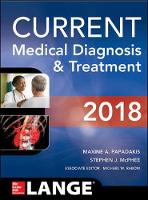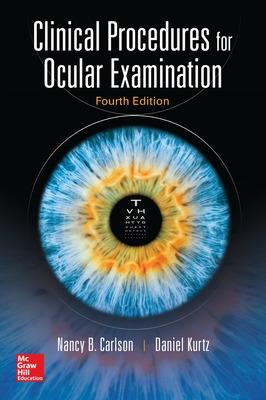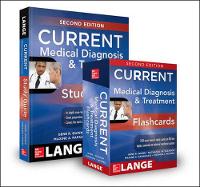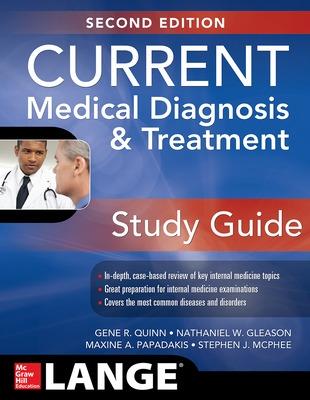Precision Medicine: A Guide to Genomics in Clinical Practice
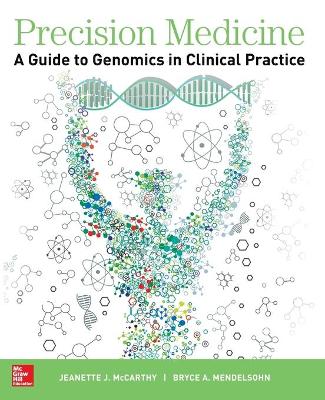 portes grátis
portes grátis
Precision Medicine: A Guide to Genomics in Clinical Practice
McCarthy, Jeanette; Mendelsohn, Bryce
McGraw-Hill Education
02/2017
240
Mole
Inglês
9781259644139
15 a 20 dias
404
Chapter 1: Preconception
What are the applications of precision medicine in the preconception period?
Infertility
Carrier screening - traditional and expanded
Genetic counselling, reimbursement, where to get tested
Future prospects: Preimplantation genetic testing
Chapter 2: Pregnancy
What are the applications of precision medicine during pregnancy?
Triple/quad screening
Amniocentesis/CVS
Trisomy testing using non-invasive (cfDNA) methods
Future prospects: expanded uses of cfDNA testing during pregnancy
Chapter 3: The Newborn
What are the applications of precision medicine in the newborn period? What are the situations when a clinician should consider a genetic diagnosis, what tests are commonly used, what evaluation can be performed by the non-specialist versus when to refer to a specialist.
Mandatory newborn screening
Broad classification and evaluation of birth defects
Broad classification and evaluation of metabolic disease
Future prospects: Sequencing from birth
Chapter 4: Childhood and Adolescence
What are the applications of precision medicine during childhood and adolescence?
Autism and Developmental delay
Childhood cancer (hereditary cancer)
Rare diseases and diagnostic sequencing
Support and advocacy for rare diseases
Chapters 5-9: Adulthood
Chapter 5: Pharmacogenetics
What pharmacogenetic tests are available? How valid and useful are they?
Types of pharmacogenetic markers
Efficacy-based, companion diagnostics
Safety-based, avoiding severe adverse events
Dosing-based
Understanding CYP450 alleles
Sources of information about pharmacogenetic tests
Drug labels
Evidence guidelines
PharmGKB, Dutch group
Chapter 6: Heart Disease
How is precision medicine being applied in heart disease?
Predisposition/diagnostic testing for myocardial infarction, thrombosis risk, arrhythmias
The utility of prognostic markers (e.g. CardioDx test)
Managing dose, efficacy and side effects of cardiovascular drugs using pharmacogenomics
Clopidogrel, Warfarin, Simvastatin
Chapter 7: Infectious disease
How is precision medicine being applied in infectious disease?
Managing dose, efficacy and side effects of ID drugs using pharmacogenomics
? Tracking outbreaks, pathogen discovery
? Future prospects: diagnostic sequencing
Chapter 8: Cancer
How is precision medicine being applied in cancer?
Diagnostic/predisposition testing for Hereditary cancers
HBOC, Lynch Syndrome, rare hereditary cancer syndromes
Managing dose, efficacy and side effects of cancer drugs using pharmacogenetics
Irinotecan, Belinostat, Azothioprine, Capecitaban, Tamoxifen, Oliparib
The genetic landscape of tumors
Prognostic markers
Targeted treatment and companion diagnostics
Tumor profiling and expanded treatment options
Future prospects: cfDNA for screening, diagnosing and monitoring cancer
Chapter 9: The Brain - Mental Health and Neurodegeneration
How is precision medicine being applied in mental health and neurodegenerative disease?
Predisposition/diagnostic testing for epilepsies, Alzheimer, Parkinson diseases
Managing dose, efficacy and side effects of antidepressant, antipsychotic, anti-seizure drugs using pharmacogenomics
Appendices. Conceptual framework for understanding genomic and precision medicine
Appendix 1: Genome variation
Describes the structure and organization of the human genome and the different types of variation, their consequences and distribution in different populations
DNA, RNA, Protein variation
Origin and types of genetic (DNA) variation (from big to small)
Consequences of genetic variation
Patterns of genetic variation across populations and ancestry
Appendix 2: Laboratory methods to detect genome variation
A roadmap of different testing methods that a practitioner may come across, what they can measure, and what are their limitations. Includes sample test requisitions and reports with graphical interpretation.
DNA variation (aCGH, karyotyping, FISH,Targeted genotyping, SNP arrays, Sanger and next-gen sequencing -whole genome, whole exome, panel)
The unique mitochondrial genome
RNA variation (QrtPCR, Transcript arrays, next-gen sequencing)
Protein variation (IHC, mass spectrometry)
Epigenome variation (Bisulfite sequencing)
How to find a testing laboratory (general information, specifics discussed within each disease type)
Appendix 3: Genetic variation and disease
How is genetic variation related to disease?
Inheritance patterns
Penetrance, expressivity, environmental influences
Family history: why it still matters
Appendix 4: Evidence base
How do we know if a gene-trait association is valid or clinically useful?
? Evaluating the evidence
o Establishing the role of the gene in disease
? Clinical validity (PPV, NPV)
? Clinical utility (cost effectiveness, comparative effectiveness)
? Where to find evidence, information and practice guidelines
How do we determine pathogenicity of variants in a diagnostic setting?
? Different types of evidence used in variant classification
? ACMG framework for variant classification
? Clinvar and other variant databases
Appendix 5: Regulation and reimbursement
How do regulation and reimbursement play a role in the delivery of precision medicine?
US FDA and genetic testing
Insurance coverage of genomic tests in the US
? Access to genetic testing
Appendix 6: Cross-cutting ethical issues
What key ethical issues to be aware of
with genetic testing?
Secondary/incidental findings
Discrimination and GINA
Privacy and sharing
Testing minors
Population screening
Eugenics and disability rights
How to gather appropriate informed consent
Chapter 1: Preconception
What are the applications of precision medicine in the preconception period?
Infertility
Carrier screening - traditional and expanded
Genetic counselling, reimbursement, where to get tested
Future prospects: Preimplantation genetic testing
Chapter 2: Pregnancy
What are the applications of precision medicine during pregnancy?
Triple/quad screening
Amniocentesis/CVS
Trisomy testing using non-invasive (cfDNA) methods
Future prospects: expanded uses of cfDNA testing during pregnancy
Chapter 3: The Newborn
What are the applications of precision medicine in the newborn period? What are the situations when a clinician should consider a genetic diagnosis, what tests are commonly used, what evaluation can be performed by the non-specialist versus when to refer to a specialist.
Mandatory newborn screening
Broad classification and evaluation of birth defects
Broad classification and evaluation of metabolic disease
Future prospects: Sequencing from birth
Chapter 4: Childhood and Adolescence
What are the applications of precision medicine during childhood and adolescence?
Autism and Developmental delay
Childhood cancer (hereditary cancer)
Rare diseases and diagnostic sequencing
Support and advocacy for rare diseases
Chapters 5-9: Adulthood
Chapter 5: Pharmacogenetics
What pharmacogenetic tests are available? How valid and useful are they?
Types of pharmacogenetic markers
Efficacy-based, companion diagnostics
Safety-based, avoiding severe adverse events
Dosing-based
Understanding CYP450 alleles
Sources of information about pharmacogenetic tests
Drug labels
Evidence guidelines
PharmGKB, Dutch group
Chapter 6: Heart Disease
How is precision medicine being applied in heart disease?
Predisposition/diagnostic testing for myocardial infarction, thrombosis risk, arrhythmias
The utility of prognostic markers (e.g. CardioDx test)
Managing dose, efficacy and side effects of cardiovascular drugs using pharmacogenomics
Clopidogrel, Warfarin, Simvastatin
Chapter 7: Infectious disease
How is precision medicine being applied in infectious disease?
Managing dose, efficacy and side effects of ID drugs using pharmacogenomics
? Tracking outbreaks, pathogen discovery
? Future prospects: diagnostic sequencing
Chapter 8: Cancer
How is precision medicine being applied in cancer?
Diagnostic/predisposition testing for Hereditary cancers
HBOC, Lynch Syndrome, rare hereditary cancer syndromes
Managing dose, efficacy and side effects of cancer drugs using pharmacogenetics
Irinotecan, Belinostat, Azothioprine, Capecitaban, Tamoxifen, Oliparib
The genetic landscape of tumors
Prognostic markers
Targeted treatment and companion diagnostics
Tumor profiling and expanded treatment options
Future prospects: cfDNA for screening, diagnosing and monitoring cancer
Chapter 9: The Brain - Mental Health and Neurodegeneration
How is precision medicine being applied in mental health and neurodegenerative disease?
Predisposition/diagnostic testing for epilepsies, Alzheimer, Parkinson diseases
Managing dose, efficacy and side effects of antidepressant, antipsychotic, anti-seizure drugs using pharmacogenomics
Appendices. Conceptual framework for understanding genomic and precision medicine
Appendix 1: Genome variation
Describes the structure and organization of the human genome and the different types of variation, their consequences and distribution in different populations
DNA, RNA, Protein variation
Origin and types of genetic (DNA) variation (from big to small)
Consequences of genetic variation
Patterns of genetic variation across populations and ancestry
Appendix 2: Laboratory methods to detect genome variation
A roadmap of different testing methods that a practitioner may come across, what they can measure, and what are their limitations. Includes sample test requisitions and reports with graphical interpretation.
DNA variation (aCGH, karyotyping, FISH,Targeted genotyping, SNP arrays, Sanger and next-gen sequencing -whole genome, whole exome, panel)
The unique mitochondrial genome
RNA variation (QrtPCR, Transcript arrays, next-gen sequencing)
Protein variation (IHC, mass spectrometry)
Epigenome variation (Bisulfite sequencing)
How to find a testing laboratory (general information, specifics discussed within each disease type)
Appendix 3: Genetic variation and disease
How is genetic variation related to disease?
Inheritance patterns
Penetrance, expressivity, environmental influences
Family history: why it still matters
Appendix 4: Evidence base
How do we know if a gene-trait association is valid or clinically useful?
? Evaluating the evidence
o Establishing the role of the gene in disease
? Clinical validity (PPV, NPV)
? Clinical utility (cost effectiveness, comparative effectiveness)
? Where to find evidence, information and practice guidelines
How do we determine pathogenicity of variants in a diagnostic setting?
? Different types of evidence used in variant classification
? ACMG framework for variant classification
? Clinvar and other variant databases
Appendix 5: Regulation and reimbursement
How do regulation and reimbursement play a role in the delivery of precision medicine?
US FDA and genetic testing
Insurance coverage of genomic tests in the US
? Access to genetic testing
Appendix 6: Cross-cutting ethical issues
What key ethical issues to be aware of
with genetic testing?
Secondary/incidental findings
Discrimination and GINA
Privacy and sharing
Testing minors
Population screening
Eugenics and disability rights
How to gather appropriate informed consent


